Coakley’s Great Predecessor
by Michael McGuerty
The Soviet Chess Primer, by Ilya Maizelis, Quality Chess 2014, Paperback, Figurine Algebraic Notation, 400pp. $24.95 (ChessCafe Price: $21.39)
The Soviet Chess Primer is a modern English translation of Ilya Maizelis’s classic introduction to the game, which was simply titled “Chess” in the original Russian publication. It has been read by generations of players, including, most notably, Garry Kasparov and Anatoly Karpov, who each provide accolades for the book cover.
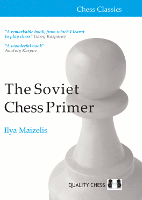
The main content is as follows:
- Part One: The Elements of Chess
- The Game Explained
- Aim of the Game
- Tactics and Strategy
- Techniques of Calculation
- Combination
- Positional Play
- How to Begin a Game
- Part Two: The Chess Game (Its Three Phases)
- The Endgame
- The Middlegame
- The Foundations of Opening Theory
- Appendix: Chess Compositions
Maizelis is said to have had a close relationship with Emanuel Lasker, and even translated Lasker’s Manual of Chess into Russian. The second world champion wrote the foreword to the original publication, “The Meaning of Chess,” in which he gives a brief historical account of the game and describes the virtues of playing. For instance, he writes “A chessplayer is greatly benefited, and his culture enhanced, by the fact that he accustoms himself to struggle in the very process of playing, and that he trains himself to form indispensable plans on the basis of much experience.”
It is quite notable that Lasker opines, “The perfecting of technique alone is a thankless task. What it perfects is a dead capability, suited to winning games against ignorant opponents and nothing else – where as the faculty of thinking and conceiving plans remains constantly alive and can bring benefit in the most unexpected manner, not only in chess but in life itself.”
In the foreword to this new edition, Mark Dvoretsky describes the The Soviet Chess Primer as “a teaching manual with an excellent selection of material convincingly presented, and a bright outward design. At the same time it is more than just a textbook. It is a story of chess as a whole, and thus its title wholly fits its content. Of course, this is not a book for the very young (writers for them go about it differently), but it will be very interesting and useful for schoolchildren and adults alike.”
This description makes me think that he is referring to the Russian edition more than the new English edition. There is no “bright outward design” here, though there are a few black-and-white comic illustrations interspersed within its pages, and the “story of chess as a whole” does not seem to be present, unless he is referring to the fact that all facets of the game are presented.
In the section “Advice to Beginners,” presumably by Maizelis, he recommends combining study (of only thirty to forty minutes a day on exercises or analysis) with practical play, and to review both wins and losses after the fact to find methods of improvement. A time-tested approach for sure! The “chief goal should be to learn how to interpret the positions in a game, how to evaluate them and analyse the various possibilities.” How refreshing that players should be encouraged to think for themselves rather than memorize some thousand-page opening tome!
Creativity is paramount here. A topic is introduced, and then follows “entertainment pages” featuring short illustrative games (not necessarily from practical play), and “fun exercises” that are amusing and instructive, and often accompanied by a little story to further capture the imagination of the reader. The modern-day equivalent of this approach to chess learning can be found in the works of Jeff Coakley for one.
Here’s an example similar to Coakley’s “Who’s the Goof” puzzles:
Correct the mistake!
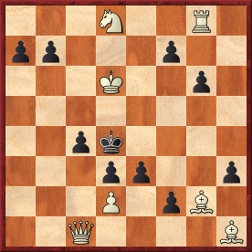
[FEN “3N2R1/pp3p2/3K2p1/8/2pk4/3pp2p/3P1pB1/2Q4BR”]
There is clearly a mistake in this diagram. Find what it is, and you will discover that White can give mate in one move, no matter which way you correct the mistake.
The answer, of course, is that there is an extra black pawn on the board, and removing any one of them allows a mate in one move. There are construction tasks, retrograde analysis puzzles, and even the original “triple loyd” puzzle (a term coined by Coakley) from 1866. The appendix provides a further selection of almost one hundred chess problems and studies.
Even the practical examples feature a strong creative element. Consider this position from the chapter on combinations:
Bondarevsky-Ufimtsev, Leningrad 1936
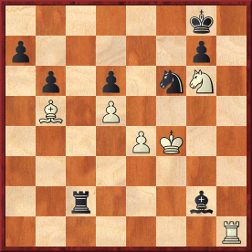
[FEN “6k1/p5p1/1p1p1nN1/1B1P4/4PK2/8/2r3b1/7R”]
White to move
If the knight on g6 were protected, then 43.Rh8+ Kf7 44.Rf8 would give mate. But 44.Kg5 can be met by 44…Nxe4+. The knight on f6 needs to be diverted by some means.
Therefore:
43.Rh8+ Kf7 44.Be8+! Nxe8 45.Kg5
The mate cannot be prevented.
1-0
Here’s one from the chapter on the middlegame:
Fridstein-Smyslov, Moscow 1944
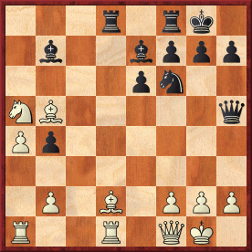
[FEN “3r1rk1/1b2bppp/4pn2/NB5q/Pp6/8/1P1B1PPP/R2R1QK1”]
White has played 21.Nxa5, which is answered by an unexpected and sharp-witted exchanging combination, giving Black a big positional advantage.
21…Bf3!! 22.gxf3 Rxd2! 23.Rxd2 Qg5+ 24.Kh1 Qxd2
Black went on to win, thanks to the pawn weaknesses that have appeared in his opponent’s camp.
…0-1
While more for adult or young improvers, stronger players should not dismiss The Soviet Chess Primer too quickly, because even they can benefit from the challenging examples and fun exercises. No matter what level of experience these sparkling examples are entertaining, and there’s plenty of technical instruction too. Reading this book will improve your chess! This is one you will want in your library.
My assessment of this product:
![]()
Order The Soviet Chess Primer
by Ilya Maizelis
A PDF file of this week’s review, along with all previous reviews, is available in the ChessCafe.com Archives.
© 2015 ChessEdu.org. All Rights Reserved.
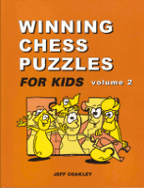
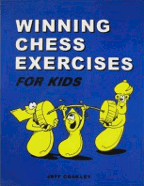
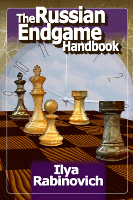
Leave a Reply